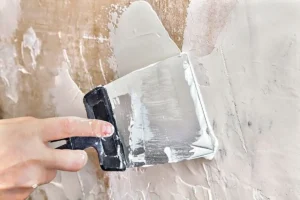In drymix mortar, cellulose ether is a chemical additive that, despite its low dosage, significantly enhances mortar performance. High-quality cellulose ether ensures the quality of application results. Therefore, conducting quality testing on cellulose ether products before purchasing for your construction projects is essential.
To ensure accurate and comprehensive quality assessment of cellulose ether after testing, at least 9 different testing steps are required, each examining essential parameters of the cellulose ether. You can perform these tests in your own lab or commission a third-party lab to confirm the quality of the product you are buying.
Test Item 1 —— Ash Content
Ash content reflects the inorganic proportion in a sample. Different brands of cellulose ether powders with varying ash contents will yield different application effects at the same volume. Lower ash content powders require less dosage for better results.
During ash content testing, samples are heated to burn off organic materials, leaving behind inorganic substances. It’s worth noting that the ashing process differs slightly for cellulose ether and RDP (Redispersible Polymer Powder), with cellulose ether requiring sulfuric acid for ashing.
Experimental Preparation
Muffle furnace, crucible, sample powder, thermometer, sulfuric acid
Testing Method
STEPS 1 —— Firing
The RDP powder is directly added into a crucible and placed in a muffle furnace, heated to 950°C and maintained for 1 hour. Cellulose ether powder requires the additional addition of sulfuric acid before firing in a muffle furnace at 750°C for one hour to ensure complete combustion of organic materials in the sample.
STEPS 2 —— Cooling
After firing is complete, turn off the muffle furnace and allow the sample to cool naturally inside the furnace to room temperature.
STEPS 3 —— Weighing
Weigh the cooled crucible along with the ash residue to calculate the ash content. Ash content (%) = (Weight of crucible with ash after combustion – Weight of empty crucible). It is recommended to repeat the measurement three times, take the average, to enhance the accuracy of the experimental results.
Test Item 2 —— Viscosity
Viscosity is a crucial quality standard for cellulose ether products, significantly impacting project efficiency. Measuring viscosity requires the use of a rotational viscometer. The commonly used viscometers in the market are the Brookfield viscometer and NDJ viscometer, which are used to test solution concentrations. When using them, it is important to ensure that the rotational viscometer remains in a horizontal position.
Experimental Preparation
Muffle furnace, crucible, sample powder, thermometer, sulfuric acid
Testing Method
Place the prepared cellulose ether aqueous solution under the rotor of the rotational viscometer. Ensure the rotor is clean of any residue from previous samples. Once the sample is in place, start the machine, and you will be able to see the viscosity value on the display screen.
Test Item 3 —— Application Testing
Application testing is the most direct way to test the quality of additives. You can choose commonly used materials such as tile adhesives, wall putty, and concrete to formulate recipes for performance testing. This type of testing often includes open time and water retention capacity testing. In this issue, we will illustrate how to conduct a test on the anti-sagging performance of tile adhesives.
Experimental Preparation
Tiles, tile adhesive, timer, weights, concrete board, tape, tile adhesive trowel,etc.
Testing Method
STEPS 1 —— Mixing and spreading
Prepare the tile adhesive according to the formula. Use tape to mark the area to be applied. Apply a thick layer of adhesive on the concrete board, then use a notched trowel to comb the adhesive, ensuring an even application.
STEPS 2 —— Place the tiles
Place the prepared tiles on the tile adhesive and press them down firmly.
STEPS 3 —— Anti-sag test
Place the concrete board vertically at a 90° angle, and place a pressure tool or weights on the tiles to test the anti-sagging capacity. You can also purchase specialized supports for conducting anti-sag tests, or simply observe the tiles’ anti-sagging capacity under their own weight without additional pressure tools. Remember to use a ruler or scale to record the initial position of the tiles.
STEPS 4 —— Data calculation
After 20 minutes, remeasure the position of the tile adhesive. The difference between the initial and final positions is the maximum distance the tile sags under load or its own weight.
Test Item 4 —— Water Retention Capacity & Open Time
In the past, water retention capacity was typically tested using the filter paper method. In today’s tests, open time and water retention capacity are often conducted together during the tile adhesive application test.
Experimental Preparation
Tiles, tile adhesive, timer, weights, concrete board, tape, tile adhesive trowel, etc.
Testing Method
STEPS 1 —— Mixing and spreading
Prepare the tile adhesive according to the formula, try to prepare a bit more to conduct multiple sets of control experiments.
STEPS 2 —— Lay the tiles
Spread the prepared tile adhesive evenly on a concrete board using a notched trowel, then place the small tiles to be tested on it. You can choose tiles of different sizes and thicknesses to test the suitability of the tile adhesive for various scenarios. Once this is done, start the timer using a stopwatch.
STEPS 3 —— Apply pressure and start the timer
Place the concrete board vertically at a 90° angle, and place a pressure tool or weights on the tiles to test the anti-sagging capacity. You can also purchase specialized supports for conducting anti-sag tests, or simply observe the tiles’ anti-sagging capacity under their own weight without additional pressure tools. Remember to use a ruler or scale to record the initial position of the tiles.
STEPS 4 —— Data calculation
After 40 minutes, you will have 8 sets of data. By observing these data, we can see that the adhesive level varies at different time points.
Test Item 5 —— Light Transmittance
Light transmittance reflects the ability of cellulose ether solutions or films to transmit light. The higher the light transmittance, the higher the transparency. In fields such as pharmaceuticals and daily chemical detergents, there is a clear demand for the light transmittance of cellulose ethers.
To test light transmittance, you need to prepare a cellulose ether water solution, place the solution in a visible spectrophotometer, wait for the machine to display the test results, and you will obtain the data results for light transmittance.
Test Item 6 —— Whiteness
Whiteness is an important indicator for measuring the appearance color of cellulose ethers. In the construction industry, cellulose ethers are widely used in products such as putty powder and latex paint. High whiteness cellulose ethers can give these building materials better color and appearance. In the papermaking and pharmaceutical industries, the appearance requirements of some products also have demands for the whiteness of cellulose ethers.
A whiteness tester is specifically used to measure the whiteness value of powder products. Simply place the powder into the instrument, wait for the value to appear. The higher the whiteness value, the closer the color of the cellulose ether is to pure white.
Test Item 7 —— Functional Group Content
The functional group content is used to determine the component ratio of hydroxypropyl and methoxy groups in cellulose ether powder. The performance of cellulose ethers is closely related to their functional group content. In the construction industry, if the functional group content of cellulose ethers does not meet the standards, it may lead to a decrease in the water retention and bonding properties of mortar, affecting the quality of construction projects.
Gas chromatography is specifically used to determine the functional group content. In addition to this, you can also use nuclear magnetic resonance and infrared spectroscopy methods.
Test Item 8 —— Moisture Testing
Water content is a crucial quality indicator for cellulose ethers, with both high and low levels potentially impacting product performance and quality stability. Excessive moisture can lead to powder clumping, affecting its flowability and dispersibility.
Halogen moisture analyzers and Karl Fischer moisture titrators are two specialized instruments used for determining water content. Additionally, water content can be measured using gas chromatography or by drying in an oven.
Test Item 9 —— HEC Enzyme Resistance
In the fields of coatings, adhesives, and more, Hydroxyethyl Cellulose (HEC) is used as a thickener and rheology modifier. If HEC has poor enzyme resistance, it can lead to a decrease in product viscosity, changes in rheological properties, and issues such as sagging and uneven brushing of coatings. This can reduce the quality and decorative effects of the coatings.
Experimental Preparation
HEC aqueous solutio, viscomete, cellulase solutio, syringe
Testing Method
STEPS 1 —— Add cellulase
Inject 0.2ml of cellulase aqueous solution into the pre-mixed HEC aqueous solution and record the initial viscosity of the HEC solution.
STEPS 2 —— Result analysis
You can measure the viscosity of the HEC solution at different time intervals after the HEC solution reacts with cellulase enzyme to calculate the viscosity reduction rate. A significant decrease in viscosity indicates poor enzyme resistance, while a minor decrease suggests good enzyme resistance.
The completion of the 9 quality testing parameters for cellulose ethers ensures that the products meet the quality standards. Different viscosity, properties, and applications of the products require varying testing criteria. Only by verifying the quality of cellulose ethers through testing can they deliver optimal performance in construction projects, enhance construction efficiency, and create outstanding results.
Before purchasing cellulose ethers in bulk, conduct sample testing!
MikaZone — Controlling Product Quality in Every Process
Product quality has always been a focus of MikaZone. At MikaZone, every batch of goods produced from the factory undergoes a sampling inspection, completing at least 7 testing steps. The testing samples are sealed and stored for over 12 months. Only when all data meets the standards, the goods are shipped uniformly and finally reach the customers.
Choosing MikaZone as your cellulose ether supplier, you will receive free samples for initial quality investigation. Additionally, our professional service team can provide customized formulation services and application formula support.
If you have more questions regarding cellulose ether quality testing or wish to obtain more product information, click on the contact button below the article. Our team will contact you within two working days to provide you with professional answers!



